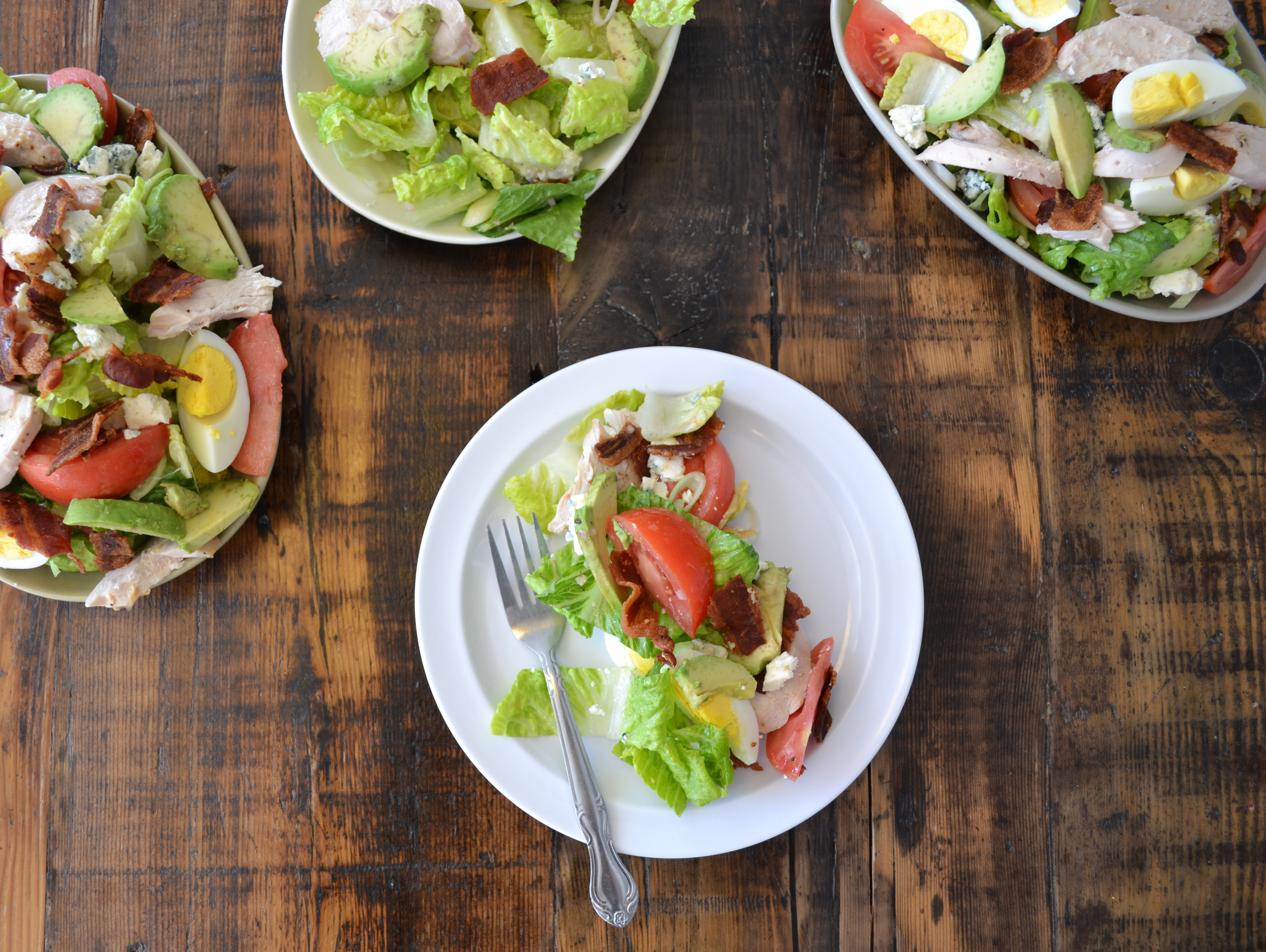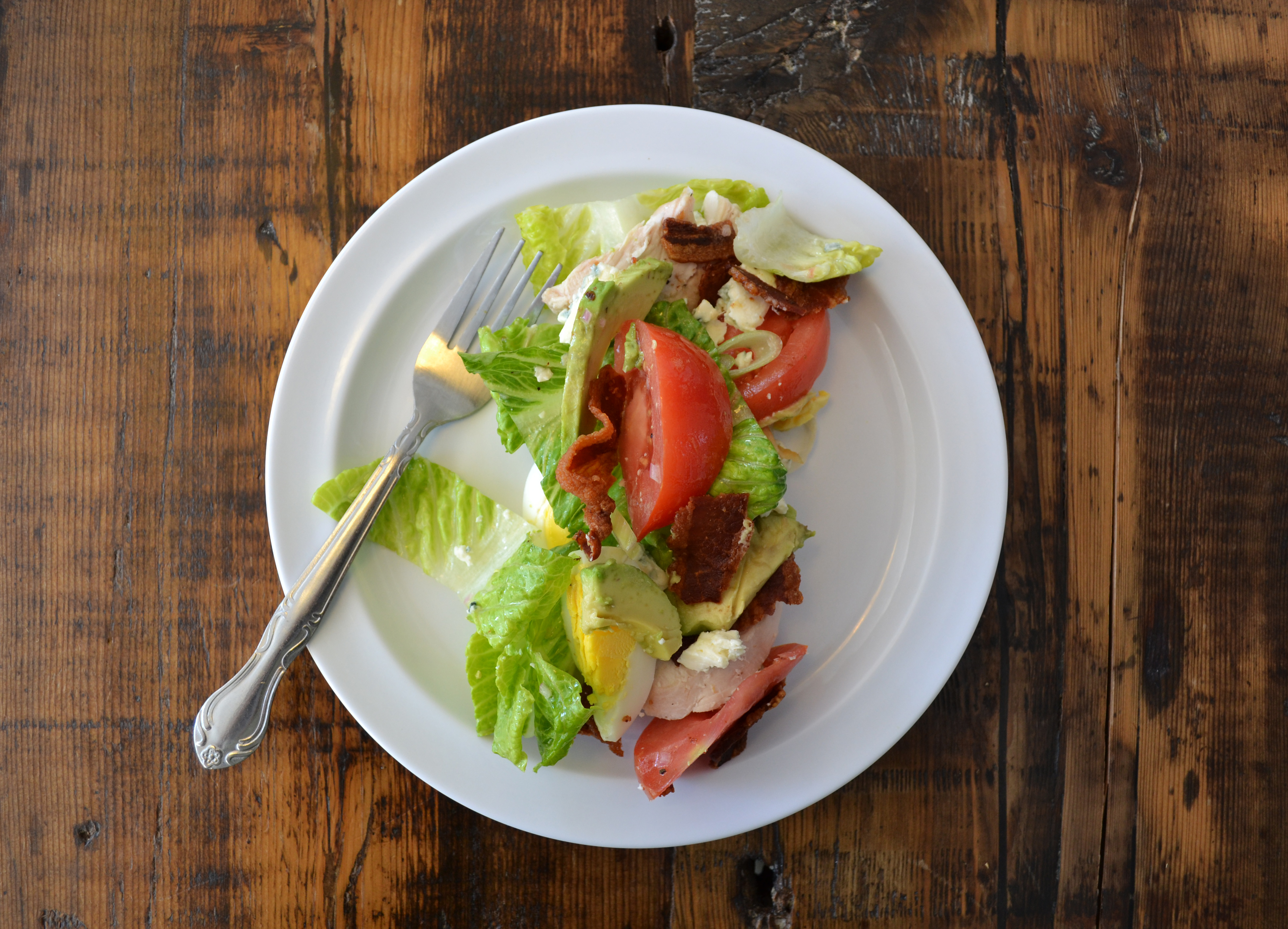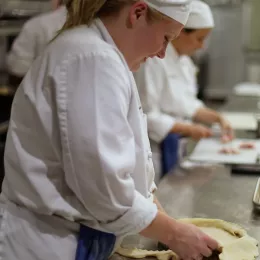Among iconic salad recipes, few embody the spirit of American ingenuity like the Cobb Salad. Its vibrant medley of greens, proteins, and bold flavors has endured the test of time, transitioning from a late-night kitchen invention to a beloved staple on menus across the country.
With deep roots in the culinary history of Los Angeles, the Cobb Salad is more than just a dish; it’s a story of flavor, innovation, and, of course, a little bit of Hollywood glamor.

A Brief History of the Cobb Salad
The origins of the Cobb Salad are as colorful as the salad itself. It was said to have been created in the 1930s by Robert H. Cobb, the owner of the legendary Brown Derby restaurant in Los Angeles. Legend has it that one evening, after a long day, Cobb wandered into his restaurant's kitchen, hungry and looking for a quick bite. He gathered what ingredients were left in the refrigerator: lettuce, hard-boiled eggs, crisp bacon, roasted chicken, avocado, tomatoes, blue cheese and a touch of French dressing. The result was an instant hit, and the Cobb Salad was born.
What made the Cobb Salad stand out wasn’t just its impromptu creation, but how it captured the essence of California cuisine—fresh, flavorful, and unpretentious. It’s no surprise that it quickly became a favorite, not just at the Brown Derby, but in households and restaurants nationwide.
The Anatomy of a Classic
What makes a Cobb Salad quintessentially "Cobb" is its perfect balance of ingredients. At its core, it's a hearty salad that's both satisfying and versatile. The crispness of the romaine and iceberg lettuces form a refreshing base, while the rich creaminess of the avocado and blue cheese offer a delightful contrast. The savory notes of bacon and chicken add substance, while the eggs provide a velvety texture that ties everything together. All these elements are meticulously arranged, not tossed, creating a mosaic of colors and flavors that is as pleasing to the eye as it is to the palate.
Today, while the traditional Cobb salad recipe remains popular, chefs and home cooks alike have embraced the opportunity to innovate, adding their unique twists while preserving the integrity of the original dish. Whether it’s a drizzle of a different dressing or the incorporation of seasonal vegetables, the Cobb Salad remains a canvas for creativity.
Why the Cobb Salad Endures
So, why does the Cobb Salad continue to hold a place of honor in American cuisine? Perhaps it’s the versatility—this salad can be as indulgent or as light as you like. Or maybe it’s the balance of flavors, where each bite offers a new experience. But beyond the ingredients and the flavor, the Cobb Salad is a testament to the idea that great food doesn’t need to be complicated. It’s a dish born of necessity, crafted with care, and served with pride.
As we continue to explore new culinary trends and rediscover old favorites, the Cobb Salad stands as a reminder that some classics are timeless. So next time you’re in the mood for something that’s both satisfying and steeped in tradition, consider revisiting the Cobb Salad—a dish that’s as American as apple pie, yet refreshingly unique every time you make it.


Ingredients
- 5 chicken breasts, bone-in
- Salt, as needed
- Ground black pepper, as needed
- 20 slices bacon, cooked
- 1 pound, 4 ounces Romaine lettuce, washed, dried and torn into pieces
- 8 fluid ounces red wine vinaigrette (recipe below)
- 10 ounces tomatoes, medium-dice
- 10 ounces blue cheese, crumbled
- 3 avocados, peeled, pitted and cut into medium-dice
- 5 green onions, bias-cut (at a roughly 45-degree angle), thinly sliced
Red Wine Vinaigrette
Yield: 8 fluid ounces
Ingredients:
- 1 tablespoon shallots, minced
- 1 tablespoon Dijon mustard
- 2 fluid ounces red wine vinegar
- 6 fluid ounces canola oil
- Salt to taste
- Pepper to taste
Directions
- Season chicken breasts with salt and pepper, and roast until internal temperature is 165°F. Cool, remove the breasts from the bone, cut into ½" dice.
- Cook the bacon slices until crisp. Drain on absorbent paper towels and keep warm.
To assemble the salad:
- For each serving, toss two ounces romaine with two tablespoons of vinaigrette. Mound on a plate, and top with four ounces chicken, 1¼ ounce diced tomato, one ounce blue cheese, two ounces avocado, ¼ ounce green onions and two bacon strips, crumbled.
Red Wine Vinaigrette Preparation:
- In a small bowl, combine the shallot, mustard and vinegar.
- Add the canola oil gradually, whisking constantly.
- Add additional flavorings and adjust the seasoning with salt and pepper. Taste and adjust acid/oil balance.
A few tips for making this salad:
- Make sure that your bacon is crispy! If it isn’t, you’ll lose that essential crunchy bite.
- Cook the chicken on the bone if possible — this delivers a more succulent and satisfying result.
- Make sure that you dress (don’t overdress) and season each component individually. This is the key to creating a cohesive and balanced dish.
- Use a long, oval platter rather than a bowl. This creates a more even spread for serving and presentation.
Ready to pursue your passion for culinary arts? Click here to learn about ICE's culinary, pastry, plant-based and hospitality programs.




